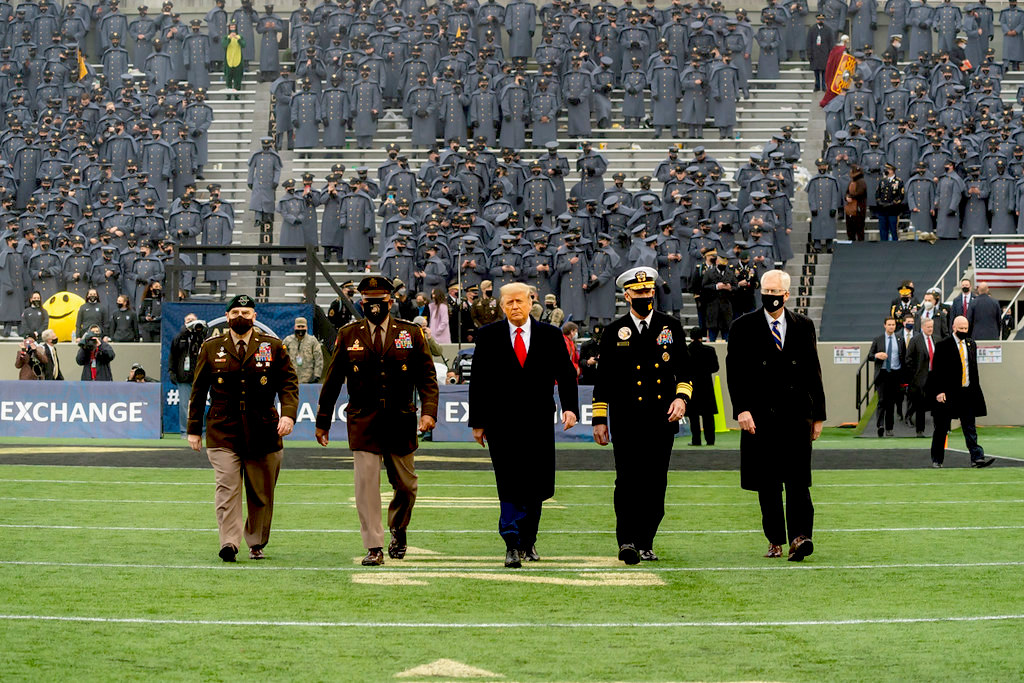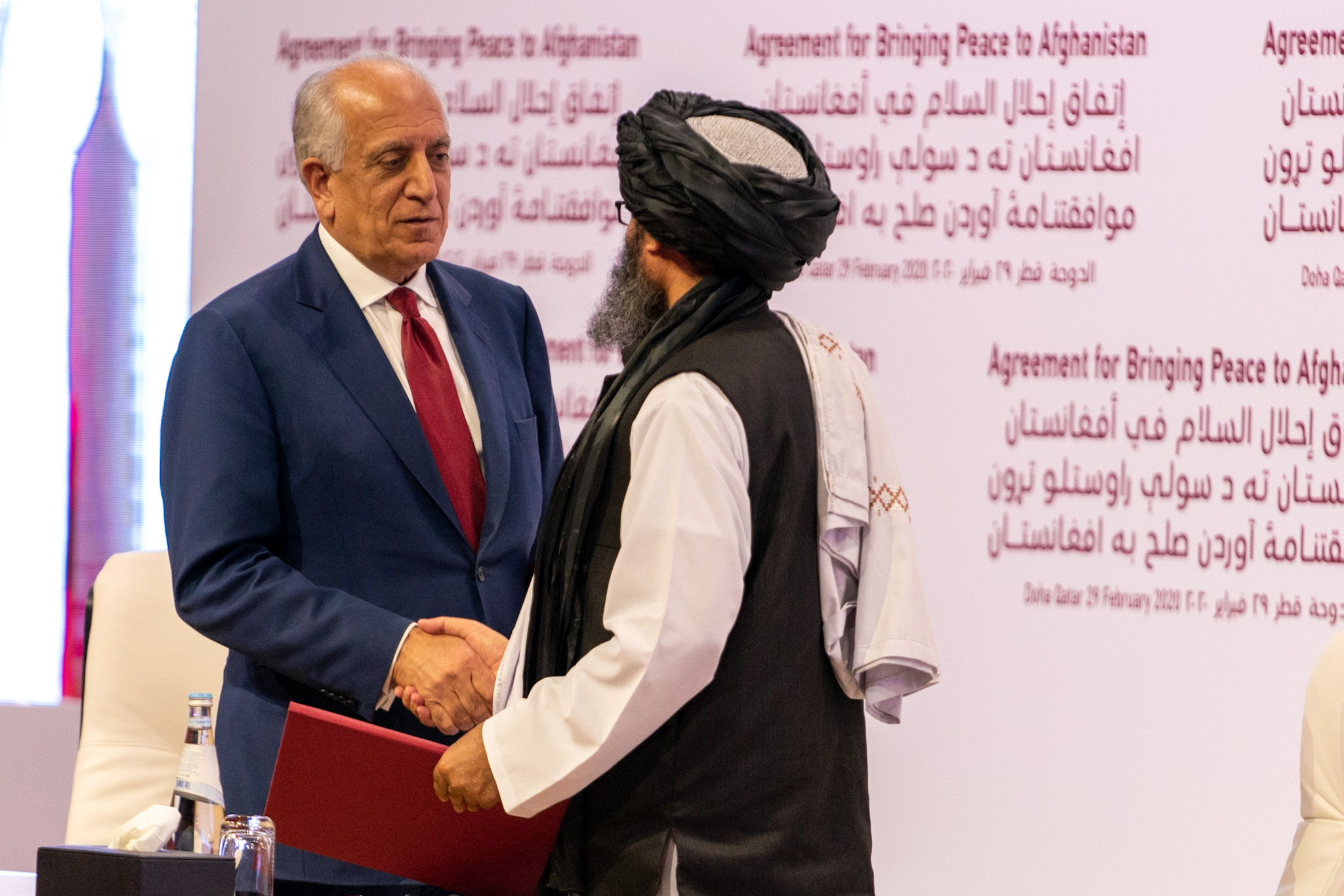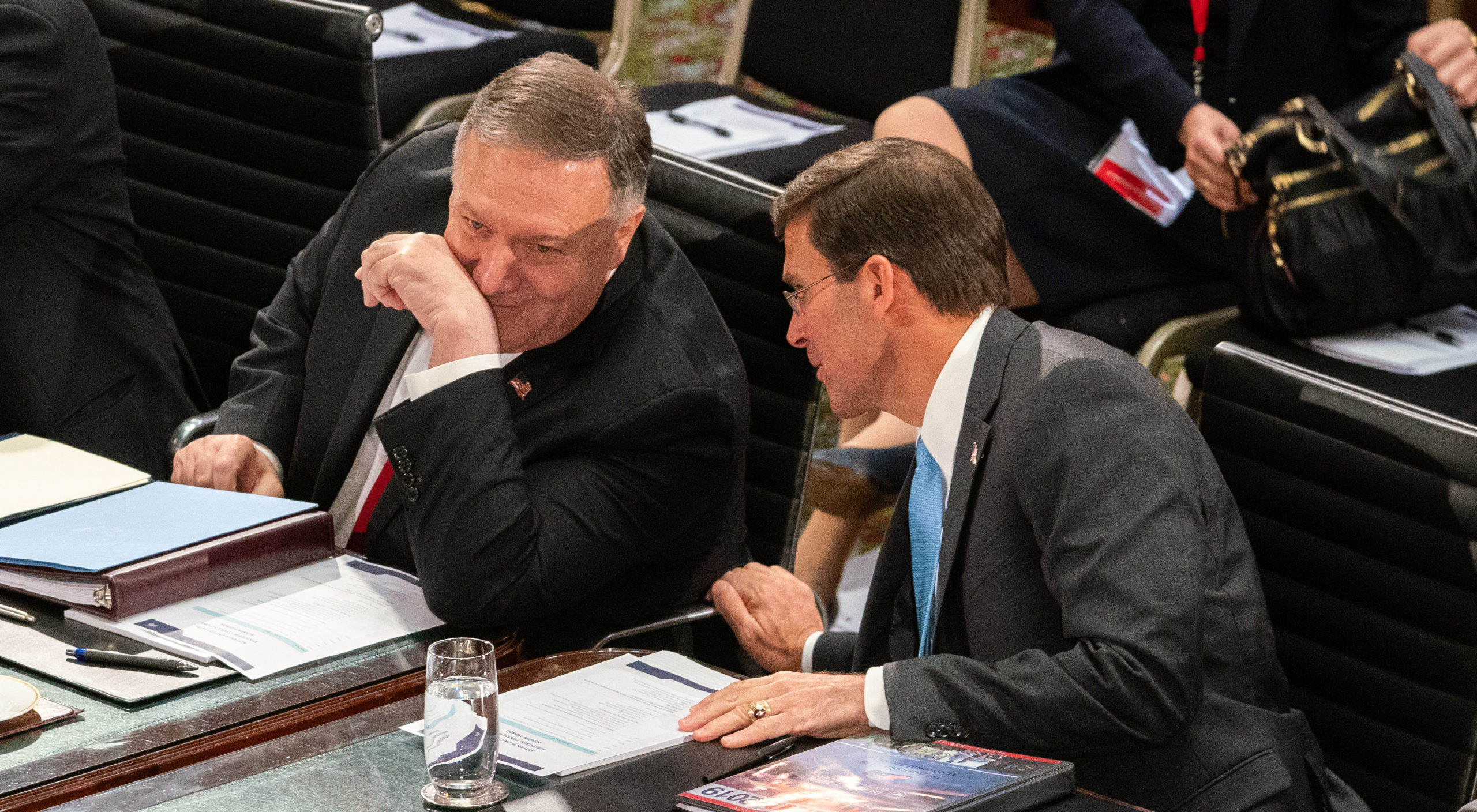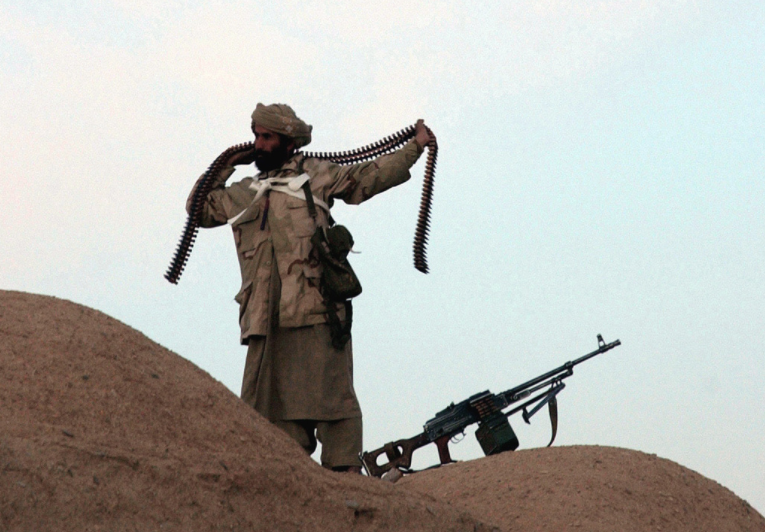A former senior U.S. adviser reveals how, after Trump’s defeat, top Pentagon brass undermined his withdrawal order and pressured him to capitulate, as Gareth Porter reports.

Dec. 12, 2020: President Donald Trump, center, preparing to participate in coin toss before the Army-Navy football game at West Point. (White House, Shealah Craighead)
 In an exclusive interview with The Grayzone, Col. Douglas Macgregor, a former senior advisor to the acting secretary of defense, revealed that President Donald Trump shocked the U.S. military only days after the election last November by signing a presidential order calling for the withdrawal of all remaining U.S. troops from Afghanistan by the end of the year.
In an exclusive interview with The Grayzone, Col. Douglas Macgregor, a former senior advisor to the acting secretary of defense, revealed that President Donald Trump shocked the U.S. military only days after the election last November by signing a presidential order calling for the withdrawal of all remaining U.S. troops from Afghanistan by the end of the year.
As Macgregor explained to The Grayzone, the order to withdraw was met with intense pressure from the chairman of the Joint Chiefs of Staff (JCS), Gen. Mark M. Milley, which caused the president to capitulate. Trump agreed to withdraw only half of the 5,000 remaining troops in the country. Neither Trump’s order nor the pressure from the JCS chairman was reported by the national media at the time.
The president’s surrender represented the Pentagon’s latest victory in a year-long campaign to sabotage the U.S.-Taliban peace agreement signed in February 2020. Military and DOD leaders thus extended the disastrous and unpopular 20-year U.S. war in Afghanistan into the administration of President Joe Biden.
The Pentagon Was Determined
The subversion of the peace agreement with the Taliban initiated by the U.S. military leadership in Washington and Afghanistan began almost as soon as Trump’s personal envoy Zalmay Khalilzad negotiated a tentative deal in November 2019. The campaign to undermine presidential authority was actively supported by then-Secretary of Defense Mark Esper.
In February 2020, under heavy pressure to amend the agreement, Trump ordered Khalilzad to deliver the Taliban an ultimatum: agree to a full ceasefire as a prelude to a broader peace deal, including negotiations with the Afghan government, or the deal was off.
The Taliban refused the immediate ceasefire with Kabul, however, offering instead a “reduction in violence” for seven days to establish a conducive atmosphere for implementing the peace agreement that had already been fleshed out in detail. It then gave the U.S. its own ultimatum: if the U.S. refused the offer, its negotiators would walk away from the table.
To salvage the deal, Khalilzad agreed to the Taliban proposal for a one-week “reduction of violence” by both sides. The adversaries reached further understandings on what such a “reduction in violence” would mean: the Taliban agreed there would be no attacks on population centers and Afghan stationary military targets, but reserved the right to attack government convoys if they exploited the reduction to seize control of new areas.

Zalmay Khalilzad, left, the U.S. envoy, signs off on peace deal with Mullah Abdul Ghani Baradar, a Taliban leader, in Doha, Qatar, Feb. 29, 2020. (State Department)
The U.S.-Taliban peace agreement signed on Feb. 29 called for a withdrawal of U.S. troops from the country in two stages. First, the U.S. agreed to reduce its troop levels to 8,600 within four and a half months and remove forces from five military bases ahead of a final withdrawal that would take place in May 2021. Second, the U.S. and its allies pledged to “refrain from the threat or use of force against the territorial integrity or political independence of Afghanistan or intervening in its domestic affairs.”
The Taliban promised in turn that it would “not allow any of its members, other individuals or groups, including al-Qaeda, to use the soil of Afghanistan to threaten the security of the United States and its allies.”
Those two commitments obliged U.S. and Taliban forces not to attack each other. The agreement also specified that the Taliban would enter into “intra-Afghan negotiations on March 10, 2020, after the two Afghan parties were to have exchanged prisoners.”
They also required the Taliban to keep al-Qaeda personnel out of Afghanistan – a pledge the Taliban military commission appeared to implement in February when it issued an order to all commanders forbidding them from “bringing foreign nationals into their ranks or giving them shelter.”
But the pact did not provide for the immediate ceasefire between Taliban and Afghan government forces which the U.S. military and Pentagon demanded. Instead “a permanent and comprehensive ceasefire” was to be negotiated between the two Afghan parties.
With startling swiftness and determination, Pentagon officials and military leadership exploited the open-ended terms of the ceasefire to derail the implementation of the agreement.
Secretary of Defense Esper claimed the peace deal allowed the U.S. military to defend Afghan forces, blatantly contradicting the agreement’s text. He then pledged to come to the defense of the Afghan government if the Taliban began mounting attacks on its forces, setting the stage for American violations on the ground.
Esper’s promise of continued U.S. military support, made public in congressional testimony days later, gave the Afghan government a clear incentive to refuse any concessions to the Taliban. Afghan President Ashraf Ghani promptly refused to go ahead with a promised prisoner exchange until formal negotiations with the Taliban had begun.
The Taliban responded by initiating a series of attacks on government troops at checkpoints in contested areas. The U.S. military command in Afghanistan responded with an airstrike against Taliban forces engaged in one of those operations in Helmand province. U.S. officials said privately that the airstrike was “a message to the Taliban” to continue what they described as the “reduction in violence commitment they had agreed…”
The combination of Esper’s assurance to the Afghan government and the U.S. airstrike showed the hand of the Pentagon and military leadership. It was clear they had no intention of passively accepting a deal to withdraw the remaining U.S. personnel from Afghanistan, and would do whatever they could to unravel it.
Gen. Kenneth McKenzie, the head of Central Command, further highlighted the Pentagon’s opposition to the deal when he declared in congressional testimony that troop withdrawals would be determined by “conditions on the ground.” In other words, it was up to the judgment of military commanders, rather than the terms of the agreement, to determine when U.S. troops would be withdrawn.
Shaping a False Narrative

U.S. Secretary of State Michael Pompeo, left, and U.S. Secretary of Defense Esper in August, 2019. (State Department/ Ron Przysucha)
The military’s plan to sabotage the agreement hinged on creating the false impression that the Taliban had reneged on its commitments. This ruse was advanced mostly publicly by Secretary of State Mike Pompeo and Defense Secretary Esper.
In an interview with CBS News, Pompeo mentioned “a detailed set of commitments that the Taliban have made about the levels of violence that can occur…” But that was a deliberate obfuscation. Though the Taliban had agreed to the seven-day “reduction in violence,” it did not apply to the peace agreement signed on Feb. 29, 2020.
On March 2, Esper told reporters, “This is a conditions-based agreement…. We’re watching the Taliban’s actions closely to assess whether they are upholding their commitments.” That same day, U.S. commander in Afghanistan Gen. Scott Miller stated through a spokesman on Twitter, “The United States has been very clear about our expectations — the violence must remain low.”
Once again, the Pentagon and the U.S. command were dictating conditions to the Taliban outside the actual written terms of the peace agreement.
The Pentagon and military command’s ploy was advanced through a story leaked to The New York Times and published on March 8. Below the headline, “A Secret Accord With the Taliban: When and How the U.S. Would Leave Afghanistan,” the story referred to two “secret annexes” to deceptively suggest that the agreements reached with the Taliban were not fully reflected in the publicly available text.
The Times’ ploy recalled the national hysteria the paper triggered last summer when it legitimized an Afghan intelligence fraud by publishing a series of lengthy articles claiming Russia had paid Taliban fighters bounties for dead American service members. Indeed, the “secret annexes” story was simply the latest political deception deployed by the Pentagon to torpedo plans for a U.S. withdrawal.
Despite the article’s assertion that the two documents “lay out the specific understandings between the United States and the Taliban,” the only specific reference in the story to any such understanding mentioned “commitments from the Taliban not to attack American forces during a withdrawal.” However, that explicit commitment was missing from the actual terms of the published accord.
As the Times acknowledged in its article, when Esper and Joint Chiefs Chairman Gen. Mark Milley appeared before the House Armed Services Committee just three days before the agreement was signed, both were asked about any “side deals with the Taliban.” Neither said they were aware of any unpublished agreements. Pompeo, who also denied the existence of any “side deals” with the Taliban, referred to them as “military implementation documents.”

Army Gen. Mark A. Milley, chairman of the Joint Chiefs of Staff, at Army-Navy football game at U.S. Military Academy at West Point, New York, Dec. 12, 2020. (DOD, Carlos M. Vazquez II)
The evidence clearly indicated that the so-called secret annexes were, in fact, internal U.S. documents on U.S. policy related to the agreement.
In April 2020, the Taliban accused the United States of flagrantly violating the deal, citing 50 attacks by U.S. and Afghan forces between March 9 and April 10, including 33 drone attacks and eight night raids by Special Operations forces.
By the summer, as the Taliban stepped up attacks on government checkpoints in areas bordering territory under their control, U.S. forces in Afghanistan and the Defense Department informed the Special Inspector General for Afghanistan Reconstruction (SIGAR) that the orders to Afghan government forces allowed them to preemptively strike Taliban positions.
The war thus returned to the situation that prevailed before the agreement was signed and the peace deal was effectively shattered.

Jan. 1, 2002: Anti-Taliban Forces (ATF) fighter wraps a bandolier of ammunition for his machine gun around his body during military effort to secure a compound in the Helmand Province of Afghanistan. (U.S. National Archives)
Meanwhile, the U.S. military continued to accuse the Taliban of failing to adhere to the agreement. In July, the U.S. government-run Voice of America reported that McKenzie had “told VOA the Taliban has not kept up their commitments agreed to in the U.S.-Taliban peace deal, leading to one of the ‘most violent’ periods of the war in Afghanistan.”
Reversing a Presidential Order
Following Trump’s defeat in the November 2020 presidential election, and after fashioning the strategy to sabotage the Afghan peace agreement, Esper, McKenzie, and Miller agreed on a memorandum from the “chain of command” warning Trump against further withdrawal from Afghanistan until “conditions” had been met. These terms included a “reduction in violence” and “progress at the negotiating table.”
Trump reacted to the memo with outrage, swiftly firing Esper on Nov. 9. He replaced him with Christopher Miller, the former head of the U.S. counter-terrorism center who agreed with Trump on withdrawal from Afghanistan.
That same day, Trump asked Col. Douglas Macgregor to serve as Miller’s “senior adviser.” Macgregor was an outspoken advocate of withdrawal from Afghanistan and a harsh critic of other U.S. wars in the Middle East, from Iraq to Syria. During a January 2020 interview with Tucker Carlson on Fox News, Macgregor blasted Pentagon leadership for its failure to find a path out of Afghanistan.

Douglas Macgregor in August 2020. (BMG-2048, CC BY-SA 4.0, Wikimedia Commons)
Once inside the Pentagon, Macgregor immediately took on the task of enabling a rapid and complete withdrawal from Afghanistan. Just how close Trump came to withdrawing all U.S. troops before leaving office had not been reported until now. Macgregor recounted the episode to The Grayzone.
According to Macgregor, he met Miller on Nov. 10 and told him that a pullout from Afghanistan could only be accomplished by a formal presidential order. Later that day, Macgregor dictated the language of such an order to the White House by phone.
The draft order stated that all uniformed military personnel would be withdrawn from Afghanistan no later than Dec. 31, 2020. Macgregor told the staffer to get a National Security Presidential Memorandum from the White House files to ensure that it was published in the correct format.
Macgregor’s White House contact informed him in the morning of Nov. 11 that Trump had read the memorandum and immediately signed it. On Nov. 12, however, he learned that Trump had met with Chairman of the Joint Chiefs Mark Milley, national security adviser Robert O’Brien, and Acting Secretary Miller. Trump was told that the orders he placed in the memorandum could not be executed, according to Macgregor’s White House contact.
Milley argued that a withdrawal would harm the chances of negotiating a final peace settlement and that continued U.S. presence in Afghanistan had “bipartisan support,” Macgregor was informed. Later that night, Macgregor learned that Trump had agreed to withdraw only half of the total: 2,500 troops. Trump had once again given in to military pressure, as he did repeatedly on Syria.
The maneuvering by the Pentagon to obstruct the Trump administration’s initiative to end an extremely unpopular war in Afghanistan was just one example in a long-established pattern of undermining presidential authority over matters of war and peace.
When he was vice president, Joe Biden witnessed first-hand the pressures the Pentagon brass imposed on President Barack Obama to escalate the war in Afghanistan. With the peace agreement’s May 1 deadline for final U.S. withdrawal just weeks away, Biden is certain to face another round of maximum pressure to keep U.S. troops in the quagmire of Afghanistan, supposedly as “leverage” on the Taliban.
Gareth Porter is an independent investigative journalist who has covered national security policy since 2005 and was the recipient of Gellhorn Prize for Journalism in 2012. His most recent book is The CIA Insider’s Guide to the Iran Crisis, co-authored with John Kiriakou, just published in February.
This article is from The Grayzone
The views expressed are solely those of the author and may or may not reflect those of Consortium News.



Generals shouldn’t wear the Green Beret. A shoulder patch on the left sleeve is more than enough, if they actually served in the field as special forces. It gives those of us who earned their beret a bad image. If you are going to go and play with the management team, you forego the privilege of wearing it.
If America is stupid enough to bankrupt itself by remaining in Afghanistan indefinitely, let them continue to spend another 21 yrs getting bogged down in this Middle Eastern quagmire, forever! America thinks it can accomplish what no other Military, over the Centuries has achieved, a tactical win & there’s a reason WHY Afghanistan is called the Graveyard of Empires? Every year the US is over there costs $400 billion which is wasted & flushed down the drain? What’s another $5-$10 Trillion that’s not being spent on its own Nation while its American Citizens end up in Nomadland, broke & in poverty? And don’t get me started on the loss of life this idiocy is causing, GET OUT NOW, ITS OVER, like in Vietnam, you lost, get over it!
does anyone know exactly why our brave men and women are still in Afghanistan and all over the world are still fighting in a war that has lasted more than 20 years? what sense does that make, any? spending trillions of dollars, our troops are still being killed, mothers, fathers, siblings, family members are still crying, bereaved because of this no ending war that NO ONE is winning. WHY??? Please send our troops home and stop the blood shed, this is not what God created man kind for. please, please, please send them home. i beg of you.
Carlene, Sorry to say this but USA keeps its BIG Military forces as a threat to FREEDOM of the people on this planet & to make sure NO NATION makes an ATTEMPT to become independent from the Washington TYRANNY & SANCTIONS. Don’t forget that this US dominance started at the foundation of USA in 1779 & with the murder of 11 million Native Indians. USA NEVER stopped murdering people worldwide over centuries under allegedly bringing democracy! In reality Washington was bringing TYRANNY & SANCTIONS. Worldwars I & II were started by USA/UK not Germany & USA is the only nation that kept its armed forces in Germany/Europe, Russia, UK & France had left many years ago. The same we see in S. Korea & Japan countries that are still occupied by US Armed Forces!